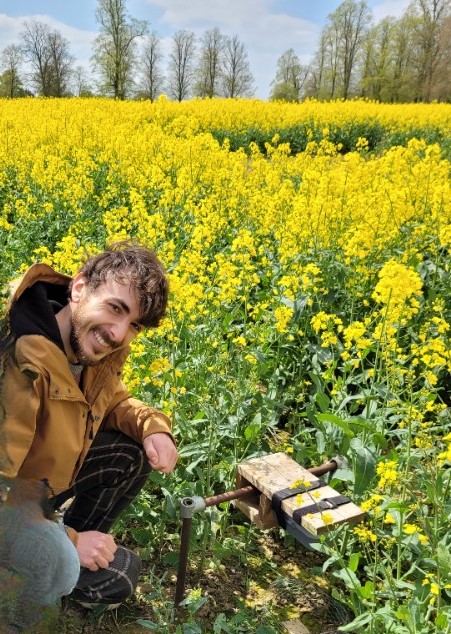United KIngdom
April 3, 2025
3 April, 2025
In-field cameras have uncovered unexpected predators of two major oilseed rape pests, potentially aiding control strategies. The camera study, conducted over two years in two UK locations, found that larval stages of predatory Carabid beetles play a crucial role in tackling the pollen beetle (Brassicogethes aeneus) and the brassica pod midge (Dasineura brassicae), two significant threats to oilseed rape crops.
Ecologists have long used camera traps to study wildlife, but their application in monitoring invertebrates is relatively new. Traditionally, pitfall traps have been the go-to method for studying predatory arthropods. However, the latest findings reveal that pitfall traps fail to capture large numbers of predatory beetle larvae, underestimating their impact as natural pest controllers.
Adjusting farming practices to support these natural predators may reduce the need for synthetic chemical pesticides, improving sustainability and biodiversity in agricultural landscapes
The study's key discovery is that these beetle larvae are highly effective predators, moving out of the soil where they live to actively feed on pest larvae at the precise moment they drop to the ground to pupate—when they are most vulnerable. This synchrony between predator activity and pest susceptibility could offer a new approach to pest management.

Researcher Gaetan Seimani-Corda setting up a camera trap
“Recognising the importance of predatory beetle larvae in natural pest control, farmers could adopt conservation biocontrol strategies that enhance the presence of these beneficial arthropods,” said Dr Sam Cook, who led the research team. “Adjusting farming practices to support these natural predators may reduce the need for synthetic chemical pesticides, improving sustainability and biodiversity in agricultural landscapes.”
The study also showed differing activity patterns depending on the time of day.
Predators of the pollen beetle larvae were significantly more active at night compared to morning or afternoon, with notable activity also recorded at dusk and dawn. This pattern was consistent across data collected in both years, indicating a preference for nocturnal activity among most predators, while some exhibited a diurnal rhythm. The highest numbers of pollen beetle larvae dropped at dusk, while the brassica pod midge larvae dropped significantly more at dawn than at other times of the day.
With European oilseed rape yields under constant threat from pests, this research provides fresh hope for more environmentally friendly farming. Encouraging predatory beetle larvae populations could be a cost-effective and ecologically sound method to keep crops safe while preserving essential predator species.
“These findings highlight the potential of cameras as powerful tools for ecological research,” said Dr Cook. “As farming continues to seek greener solutions, this innovative approach could contribute to improved pest management rooted in nature’s own defences.”
Related Rothamsted study on use of cameras in predator-prey research can be found here.
Publication
Identifying insect predators using camera traps reveal unexpected predator communities in oilseed rape fields